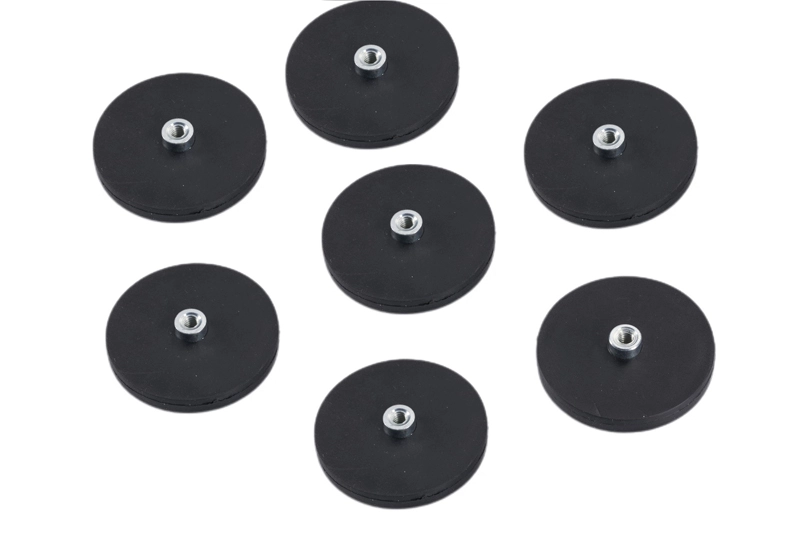Neodymium speaker magnets generate a magnetic field, and the speaker's voice coil motor is placed in the magnetic field. When the voice coil passes audio current, the current will be affected by the magnetic field, which will make the voice coil vibrate and drive the paper cone attached to the voice coil to produce sound.
The magnets on the speakers are mainly ordinary ferrite pot magnet and neodymium cup magnets. Ordinary ferrite magnets are generally used for low-end earphones, and the sound quality is poor, so they are not suitable for earphones. Neodymium cup magnets are used in high-end headphones. First-class sound quality, good elasticity, good detail performance, good vocal performance, and accurate sound field positioning.
At present, most speakers still use traditional cone-shaped single-body front and rear motion speakers. Academically, these speakers are called electrodynamics or moving coils.
1.Neodymium cup magnets
Neodymium is a very expensive material and is mainly used only in tweeters and very high-quality speakers. You'll rarely see neodymium on larger speakers because large amounts of neodymium can be very expensive. However, manufacturers started using neodymium cup magnets due to their field strength and overall efficiency.
Speakers with these magnets weigh almost half the weight of similar speakers using alnico or ferrite magnets. In turn, smaller magnets can be used, which can reduce the weight and/or size of the speaker.
2.Alnico magnets
Alnico magnets are the most commonly used material for making magnets. Alnico refers to the aluminum ("al"), nickel ("ni"), and cobalt ("co") used to make them. Alnico magnets are extremely durable and are known for delivering classic types of tones. It's becoming less common these days, and fewer and fewer speakers are made from this material.
3.Ferrite magnets
Ferrite magnets are a commonly used and affordable magnet material. They are used in speakers of all sizes, from small 3.5-inch speakers all the way up to 15-inch subwoofers. They are also naturally resistant to corrosion, which makes them a great choice for marine audio.
4.Samarium cobalt magnet
Because of its higher cost, samarium cobalt is used less frequently by speaker manufacturers. It has most of the strength of neodymium while having better heat resistance. Samarium cobalt tends to be as brittle as neodymium, but it is more resistant to moisture and corrosion.
All sound is produced by pushing air in waves. An audio speaker is a mechanism that converts electrical waves into physical waves so that air can move. Electricity and industrial mounting magnets are interrelated forces.
In fact, an electromagnet can be formed by winding a wire into a coil over and over again, as long as there is current flowing through it. Speakers work on how permanent magnets attract and repel electromagnets.

Related Article
Please fill the form to let us know your need. Our sales will get in touch with you ASAP.
Related Products